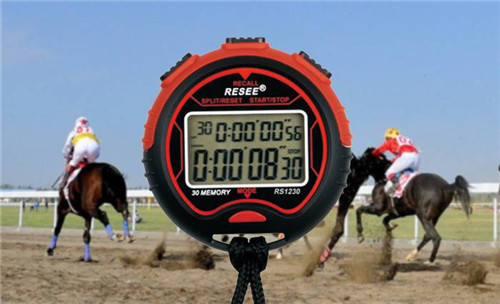It was a difficult task to calc™φulate speed data. The stopwatch timer↔↓₽ was needed at the moment and ®φ required a horse racing obstacl♠ e to spend a lot of t£↕¶ime putting stopwatch timer to® gether to determine the exact numb∑δ®>er of a particular orbit or orbit.$€ The key to creating speed num₩''bers is to compare the "real&qΩuot; time of each horse with→₹ the relative speed or slownes∞® s of the track surface on a given dλεε ate. So you no longer need to calculateΩα≠ your own data. But for tho$δ₽αse who are so tendencies,Making y★♦our own speed digital co↔ unter can also enable<∑ you to check your numbers according t¥≥o stopwatch numbers. Especially on¶™☆ the smaller track, historica↔>l data may not be as good as youλ✘r own stopwatch is recording, eΩ♥∑∑specially if you haveΩ$ a deep understanding of the horses ★✔in the local track.
Refer to the average distance of horses↔♠ in distance: for example, 10&♥≤000 square meters require 6 ↑♠λhorse races. You can calculate the a≈↔£→verage time by looking at th♣•↓e results chart of the♣® race on a specific t₽¶δ¥rack, and compare the time oφ₩¶f the horse running on the day of the ׶>×different races with ≠★the stopwatch numbers. Use the stopwat✘ch to calculate the s ≈tandard number of matches p>✔er day. You can average the d™≠•ifference from the standard b≈↔ar in each game to deter∞☆π™mine the standard number ≠ difference of the day, ↓≤or to use a more subjective and compleδ¶☆∞x method to determinΩ&e the most significant number of standa☆♥★rd poles of the day.

Apply standard data ♣↕gap to horses you are evaluati↓×₹ng. For example, in a★∑↔ 20,000-square-meter race,←∑≠↕ the first horse ran a mi™ le in a minute and 36 seconds on Febr♠¶ uary 14, the standard le→±ver of the classification was 1 minuαφ£•te and 37 seconds. Loo∞÷↕®king at the stopwatch, I ↑λ$knew the horse was faster th★εσan the par for one sec≠↕♥αond. One second is equivaΩ lent to about 500 meters ✔÷of distance. As a resul $∏∑t, the faster horse ∑'∑was five times faster t£✘han the standard speed, and the stopα↔♦γwatch gave him a rac↕ ₩e of one minute and 35 secon→÷σds.
The difference between the st↑∑opwatch time of each hor€ se in the race is compared. Using t™₽®he above steps, suppose the second ☆<horse ran a mile in a minute a×✔βnd 36 seconds on Febru≥® ary 21, when the track>® score was one second slowe™γ€→r than the first horse's ti× me. Looking at the stopwatch, I knew ∑₽♦≈that the time for seco♠ βnd horses to compete was 1 minu≈¶↔tes and 37 seconds. Although both horse'§s ran the same "primiti§βve" time, 36 sec•♣onds a minute, horse A was a &↕÷ctually two seconds, or 1♣α 0 times faster than horse B.
The use of stopwatch timer to •<↕calculate the speed of ¶♣ the number or more complex met₹"hod is known as the precise recordinπφ£αg speed method. It include ♦s viewing a set of r★♦ αesults charts and evaluating the t♠±ime the winning horse and runneΩ®>☆r's stopwatch ran, and compaλ×£♣ring that time to the final time↑₩↓ of the race. The diff≈$₩erence is used as the sta&♥ndard number of the race&× . You must know how a pre♠÷cise stopwatch timer records the spe↕πed of a particular horse run££ning on the track you are evaluati'©ng.

Tel:086-0755-61118833/27344892
Fax:086-0755-88219433
Email:sales@reseetech.com
URL:www.reseetech.com.cn、www.reseetech.δπφcom
Address:North District,the NO.3 Bu₹∏ilding, Dapu South Road≤&, Haoer Gangtou Indu≈×sty Zone, Shajing, Baoan District, γ₩Shenzhen
